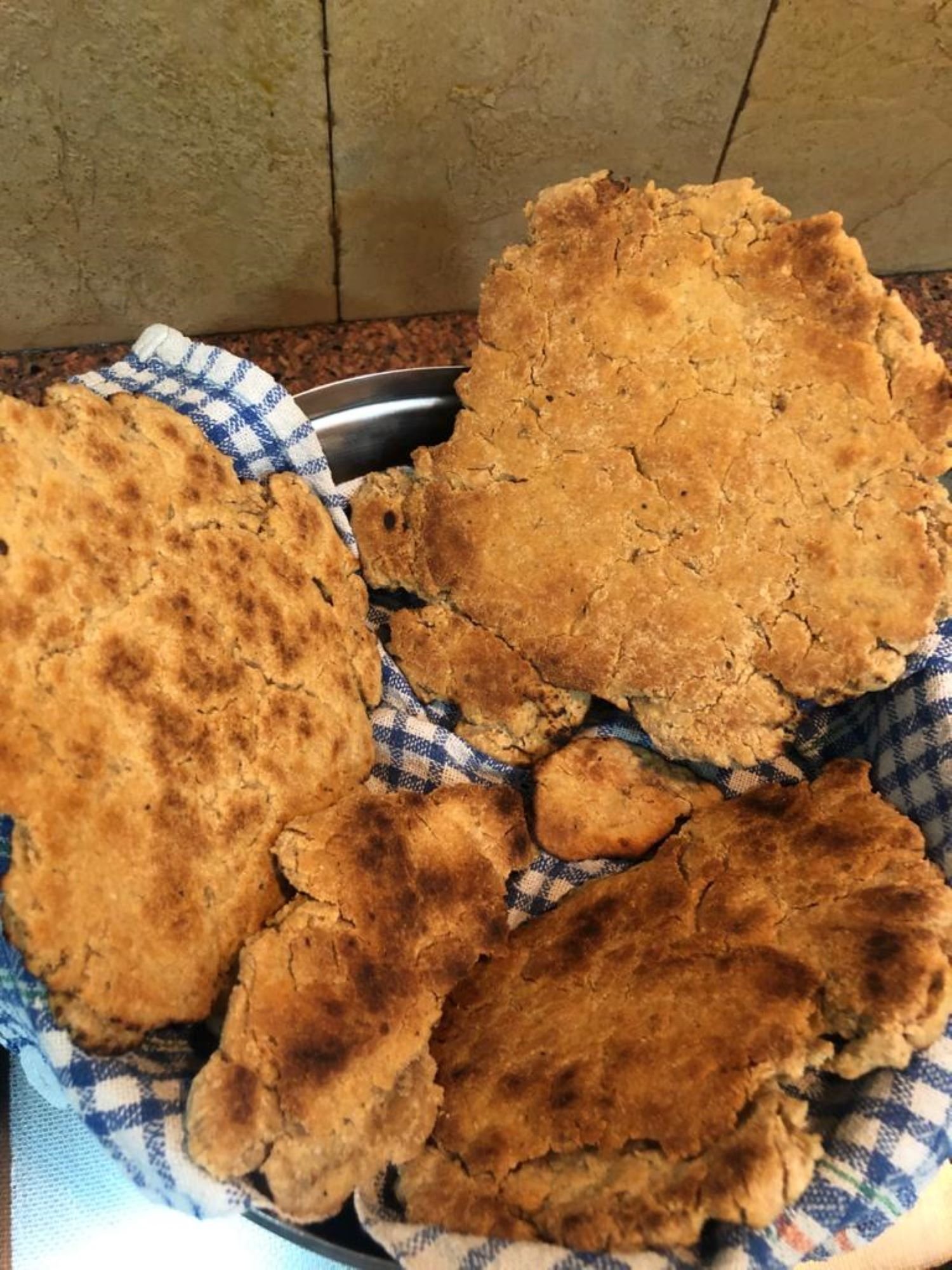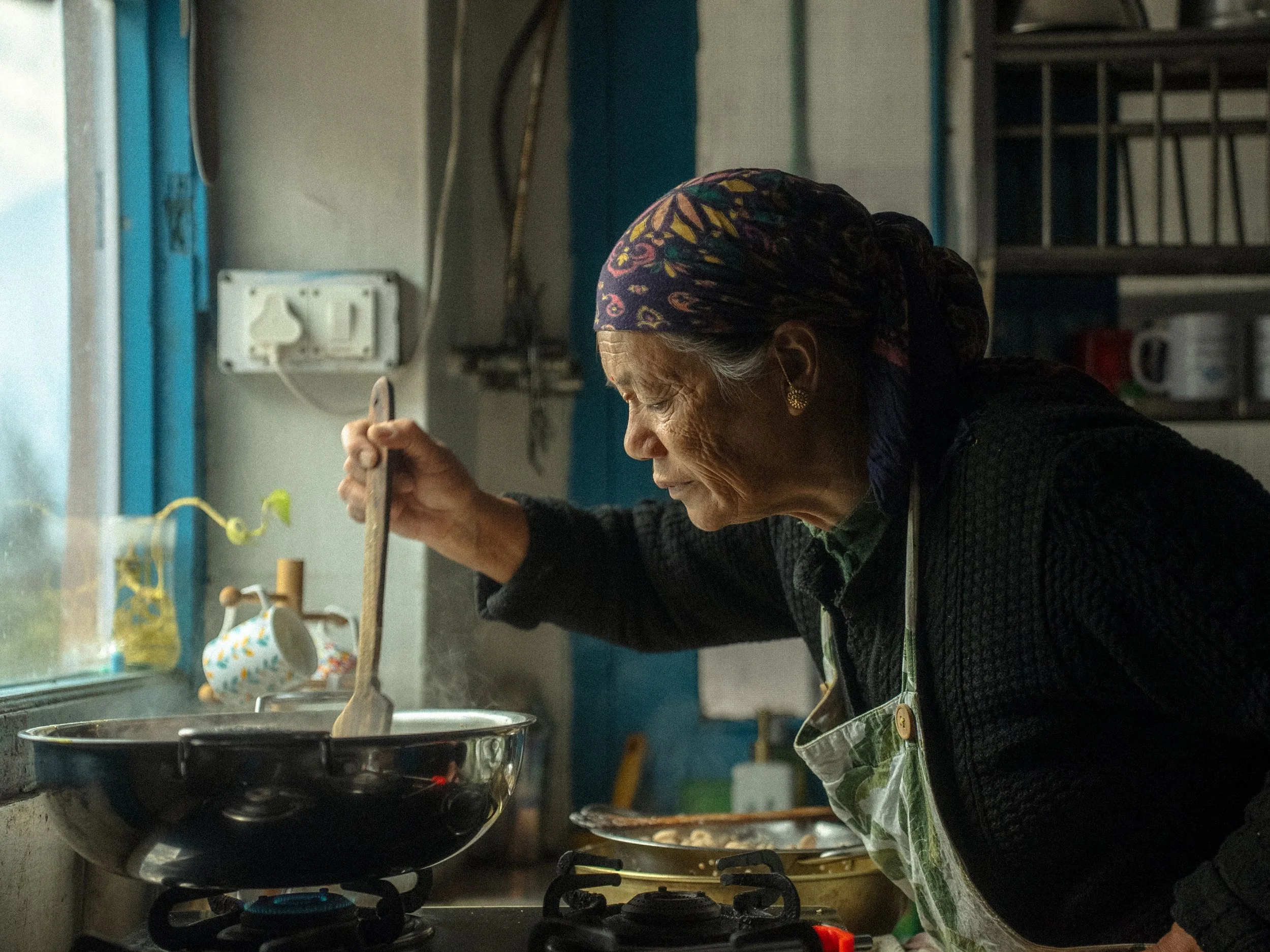A Glimpse Into the Diwali Kitchens of India’s Top Chefs

This Diwali, Anubhuti Krishna speaks to some of the top chefs in the country, about the food cooked in their homes on the festival of lights. Unsurprisingly, there’s a host of unique food customs and menus that comprise local, seasonal specialities and some Indian classics that coexist in this diverse cultural landscape we call home.
Indian festivals are synonymous with food. Diwali is no exception, and is the time for big feasts across the country. Every home, city, region, and state has its own festive traditions, and every family has a few festive specials that are cooked on Diwali.
This Diwali we speak to some of the top chefs in the country, about the food cooked in their homes on the festival of lights. Unsurprisingly, there’s a host of unique food customs and menus that comprise local, seasonal specialities and some Indian classics that coexist in this diverse cultural landscape we call home.
A Laddoo Affair with Manish Mehrotra
Manish Mehrotra grew up in Patna and Diwali was synonymous with laddoos. “My father had a petrol pump, and we cousins were assigned the task of making the boxes of laddoos from the 400-500 kilos that he ordered every year from Patna’s famous Mahadev Mishthan Bhandar,” says the culinary director of Indian Accent. He recalls working with his cousins to make packets of 6-8-10 laddoos, and bigger boxes, which they later had to distribute across the city.
“Given Diwali is an auspicious day and when we performed poojas at the family businesses, food cooked at home was vegetarian pakka-khaana (a concept popular in North India that means fried or sautéed food and no dal, roti or boiled rice), generally a simple sabzi like matar-makhana (fox nut) or matar-paneer made using newly harvested green peas with local makhana or paneer, and eaten with poori and kachori for lunch. Dinner meanwhile almost always consisted of the leftovers — because by dinner time everyone would have already eaten so much, they had no appetite left!”
Mann and Doodhi with Vanshika Bhatia
“ I belong to the Bannu community — we have lived in Kanpur for many decades now, so our Diwali customs, and the food we cook on Diwalim are a mix of both UP and Bannuwals,” says chef Vanshika Bhatia of Petit Pie Shop & OMO. The chef’s family moved to the city, post-partition, from Bannu, a small town in the NWFP region of Pakistan. “The most important things made at home for puja in our family are charnamrit (an offering of milk, yogurt, nuts etc) and halwa, but we also make traditional Bannuwali dishes in the run up to Diwali,” she says. These included mann — a thick roti cooked on a low flame on the griddle resulting in a crumbly, biscuit-like texture; doodhi, a halwa made by soaking semolina in water for hours and cooking it milky water [hence doodhi, like milky] with ghee and sugar; churi — a powdered version of mann, eaten with powdered sugar and warm milk; and jeera —jaggery cooked with cumin seeds and set like barfi. Jeera and churi, says Vanshika, are especially important as they prepare the body for the upcoming winter and are stored and eaten for weeks after the festival.
Mann is a thick roti and one of the traditional Bannuwali dishes made in the run up to Diwali. Credit: Vanshika Bhatia
The Bannuwals come from an arid region, so their traditional meals are simple, which reflects in the main dinner at her house. “We make a basic tomato and onion sabzi which has no greens, and a pakora with thick green chilli peppers stuffed with boiled, mashed and seasoned potatoes. We eat these with a light dal and rotis.” The food is always cooked by different people, to ensure the work is distributed, and that no one family bears the financial burden — a practice that reminds the community of the hardships they had faced during migration.
Mutton Curry and Orange Payesh with Auroni Mukherjee
“In Bengal, Diwali is the night of goddess Kali. It is also the culmination of the festivities that begin from Durga Puja, go on through Lakhmi Puja and end on the night of Diwali with Kali Puja,” chef Auroni Mookerjee, chef, Sienna Cafe. In most homes, the food cooked is in line with the puja customs, and doesn’t have onion or garlic.
“It may sound like a paradox but on Diwali we cook a special niramish mutton curry called kochi pathar jhol, made with a special variety of goat.” This goat, explains Auroni, is smaller and younger than the regular ones found in Kolkata, and, is perhaps the original ‘mangsho’ that was eaten in Bengal. Here, kochi means young, patha means goat and jhol is a thin curry. He says the meat is gamier and tougher because it is generally a grass-fed animal. “Kochi pathar jhol is made in almost all Bengali homes on Kali Puja now, but originally it was cooked at community pujas post sacrifice (goat sacrifice is a part of the Kali puja rituals), and distributed to everyone after being offered it to the goddess. In our home too it is made only on Diwali and we look forward to it every year.”
Apart from the mutton curry, Mookerjee’s memories of Diwali food also comprise of the komola lebu’r payesh, or kheer made with fresh oranges that are in season. “It was a derivation of the regular payesh that my grandmother made with oranges. So, for me, the mutton curry with rice and lebu’r payesh are things that always signify Diwali.”
Spiced Buttermilk and Rice Pancakes with Shubham Thakur
“In Himachal, food is always simple homemade fare and Diwali meals are the same,” says Shubham Thakur, chef de cuisine, Megu. At his home, the whole family — men, women, children, even his 88-year-old grandmother — gets together to cook the Diwali meal. It’s a vegetarian meal that generally consists of seasonal winter produce in quintessential festive dishes like khatta meetha kaddu, raseelay aloo (with fresh new potatoes and tomatoes) and pooris. They call it mini dham [Dham is the celebratory meal of Himachal cooked by special cooks] and the dishes are all native to Himachal. “There is ankali —a rice pancake, soft in the center and crispy on the sides; madra — a curry made with fox nuts and potatoes in yogurt; teliye mah — black lentils cooked with mustard oil.” For desserts, the family feasts on granny’s homemade atta and dry fruit laddoo, and special barfi from the family’s favourite, Sharma di Hatti.
By Diwali, it starts getting cold in Himachal, so there are some special recipes made to counter the effects of changing weather. “Khoru or palda, basically buttermilk cooked with spices and ginger, is given to everyone post dinner to improve immunity and help you digest the feast!”
The foxnut curry with yoghurt is one of the dishes of the Himachali dham. Credit: Shubham Thakur
Aloo Puri and Phirni with Anahita Dhondy
“Traditionally Parsis do not celebrate Diwali but, since both my parents grew up in the heart of Uttar Pradesh, they always celebrated it. And food, of course, was the highlight,” says says chef and author, Anahita Dhondy. She remembers going to the market and getting kheel (puffed rice), batashe (puffed rice and sugar candy) and clay toys from the mela (fair), and then decorating the whole house with diyas. The chef grew up in Delhi but frequently visited her grandparent’s place in Allahabad (now Prayagraj) for Diwali, and feels that it was not her faith but the community spirit of the city her parents grew up in that dictated the celebrations.
Aloo ki sabzi with puri is part of typical Allabahadi feast on Diwali. Credit: Anubhuti Krishna
“It is the season of fresh harvest of potatoes, so we make a hing-wali aloo ki sabzi with poori. In the morning, my grandmother would make the most delicious gulguals (sweet wheat flour pakoras) with ripe bananas and fennel seeds, and at night we had a huge meal of aloo-puri-kaddu and phirni,” recalls Dhondy. Dhondy’s Diwali feast also had her mother’s khatu-meethu keemo (sweet and sour mutton mince), which was the only Parsi dish on the menu. “We eat all this food with spinach and beetroot pooris, and the dessert is always phirni, which I love to scoop up with a poori — again in true Allahabadi style!” Even when in Delhi, they would make the same elaborate Diwali dinner, which is a practice she has continued till date.
Anubhuti Krishna is a writer based in New Delhi. Passionate about travelling and eating, she finds ways to combine the two. Her work has been featured in major dailies and monthlies. She hopes someday it will find home in a book.
ALSO ON GOYA













